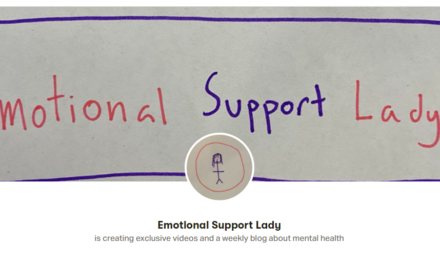Google crawls your website every month (at a minimum) to see how your content has changed and if it is worthy of its rankings.
But how often do you crawl your website, video channel, podcast episode director, or other content platform?
Do you know what content proved worthy of your audience and your business?
Execute your crawl with a free content audit. In a 2023 study, Semrush found that 61% of marketers conduct content audits at least twice a year. Half of those who did an audit and updated their content accordingly experienced increased engagement and a boost in rankings/traffic.
As a content entrepreneur, you should follow a similar audit pattern to make more informed decisions on how to improve your content and achieve your business goals. While the process takes time, it doesn’t have to be a line item in your financial budget. This low-tech, free content audit will take less time once you establish a process and repeat it regularly.
1. Identify your content.
Create a spreadsheet or other tracking document. Include columns for title, topic, publication date, and format (i.e., blog, ebook, course, video).
If you’re well organized from the beginning, you can add a line every time you publish content. If you’re like me, you’ll need to work a little harder. With websites, I like to use Google Analytics. (Go to GA4. Select Explore. Click on the plus icon to create a new report. Customize your report. Double-click all dimensions and metrics. The first column contains full-page URLs.)
For a YouTube channel, you can do it manually by going to the Videos tab. But an easier move is to use Google Takeout. (Log into your Google account connected to the channel and scroll down to the YouTube data option. Here’s a video to help.)
Most podcast platforms let you download your episodes into a CSV file. It sometimes includes the title, publication dates, duration, etc. You’ll have to do it manually if they don’t download that information.
2. Figure out what content works best and what doesn’t work at all.
At this point, you need to pull in the metrics most relevant to the target audience and your business. For example, traffic to a content asset might seem like the best metric for success – and it is if the business goal is to attract an audience. But it’s not the best metric if your business goal is to convert the audience into subscribers. The better metric for that would be the percentage of the audience that signed up for the newsletter (i.e., the traffic number on the thank-you-for-subscribing page). Learn more about which metrics matter in this article.
Tracking the content by the top metrics for your business enables you to sort the spreadsheet to identify the top and bottom-performing content. Pick the 10 best and 10 worst to investigate further.
3. Learn from the best and the worst content.
What worked and what didn’t with this content? Do you see patterns? For example, do short videos deliver better than long-form articles? Are some topics and categories consistently popular? What about publication dates? Do punchy subject lines produce better open rates than explanatory ones? What role does the meta or other description play?
While the questions to investigate can seem limitless, ask a manageable number. As you repeat this audit process, you may discover some questions asked in the first audits don’t deliver the answers you really need.
If you find an asset or two that are outliers, remove them. You don’t want to update your strategy based on content that delivers seemingly one-off success or failure stories.
Use what you learn to analyze the content qualitatively, noting any commonalities as you review. With the quantitative and qualitative information, you can move forward by updating existing content, tweaking your editorial strategy, and evaluating your business goals. In this process, set priorities. For example, is it worth improving the worst-performing content, or should you spend that time developing new content that expands on what’s working with the best content?
If you opt to update content, note what you did on the spreadsheet so you can identify the elements that may have contributed to the content asset’s improved performance.
Caveat: Don’t delete your worst-performing content from your site. Keep it as is (as long as it’s accurate), or redirect the URL to a better-performing page relevant to the topic. Deleting it could hurt your search rankings or frustrate users of any site that’s linked to that page.
4. Repeat every quarter.
Go through this process every quarter to better understand the trends of what’s working for your audience and your business. You can see which content consistently performs better and which content sees a drop in interest after a certain time. That additional data can help you adjust your editorial planning and business strategy.
Helpful Resources:
The Step-by-Step Guide to Conducting a Content Audit in 2024 [Semrush]
How To Perform a Content Audit + 6 Free Templates [Wordstream]
What Creators Should Know About Google Analytics 4 [The Tilt]
How To Narrow the Metrics That Matter to Your Content Business [The Tilt]
About the author
Ann regularly combines words and strategy for B2B, B2C, and nonprofits, continuing to live up to her high school nickname, Editor Ann. An IABC Communicator of the Year and founder of G Force Communication, Ann coaches and trains professionals in all things content. Connect with her on LinkedIn and Twitter.










